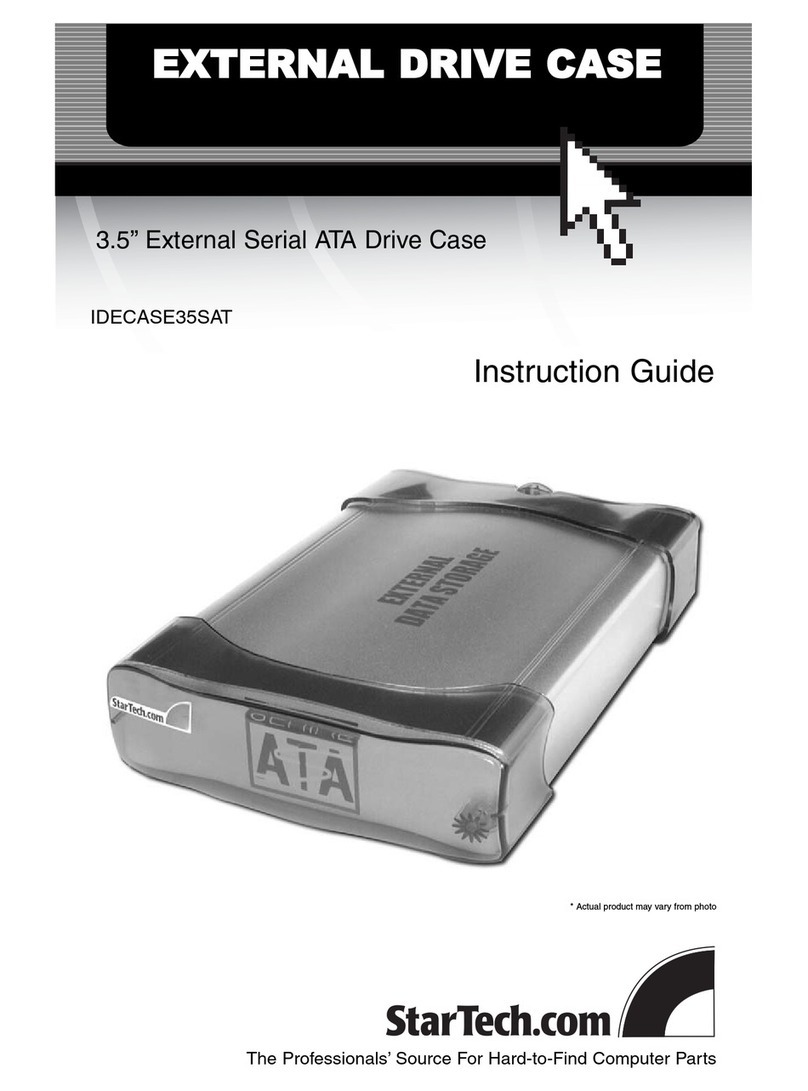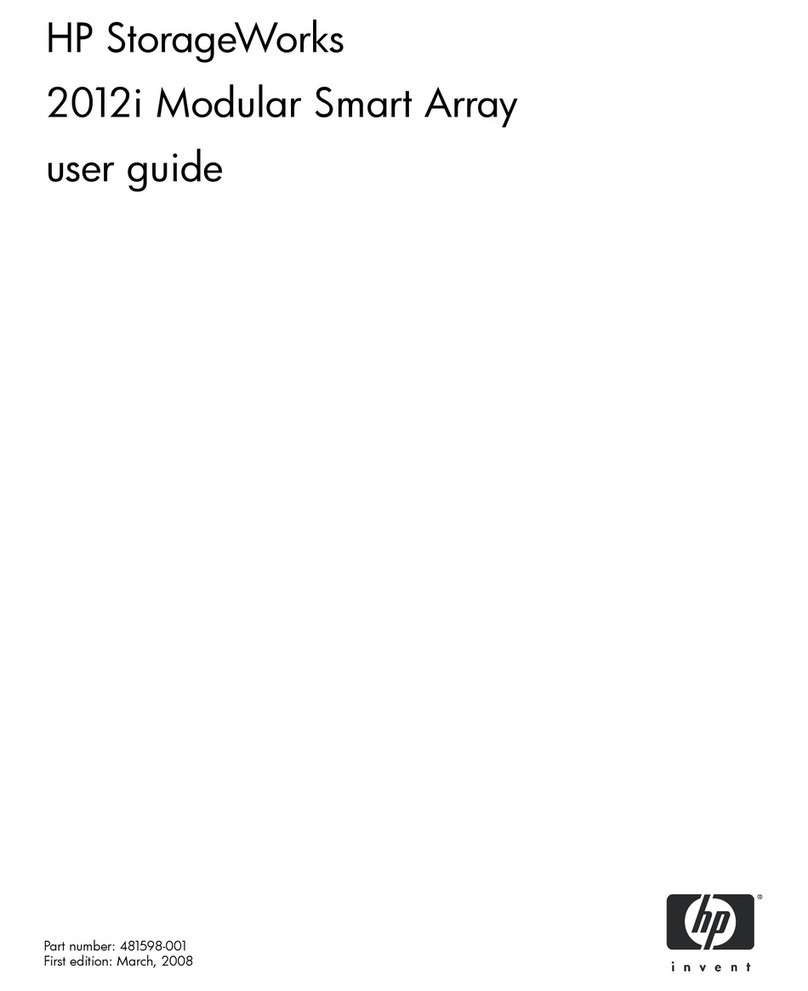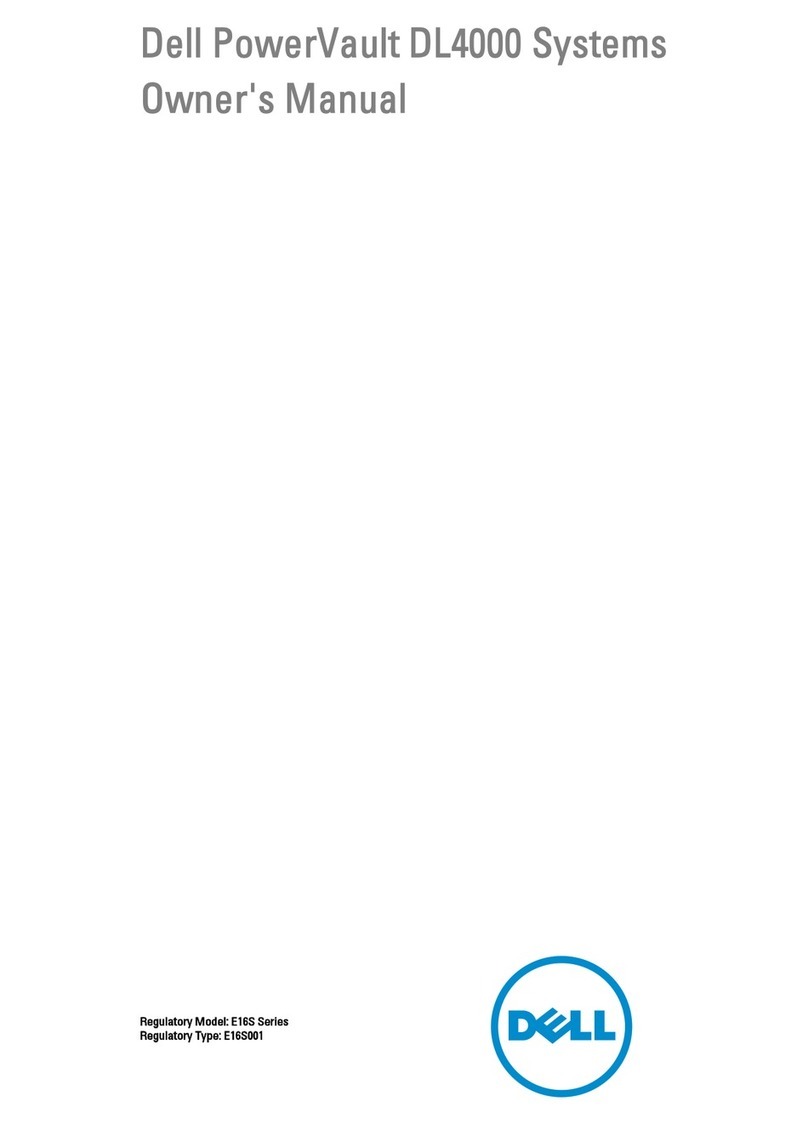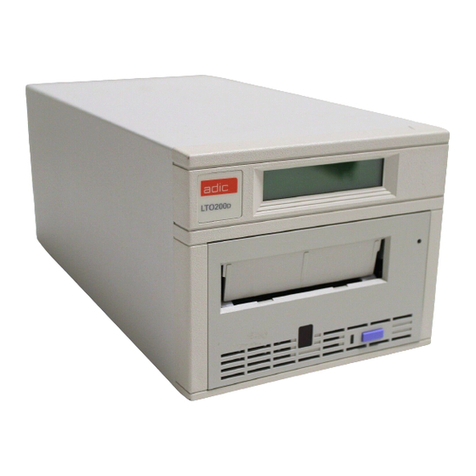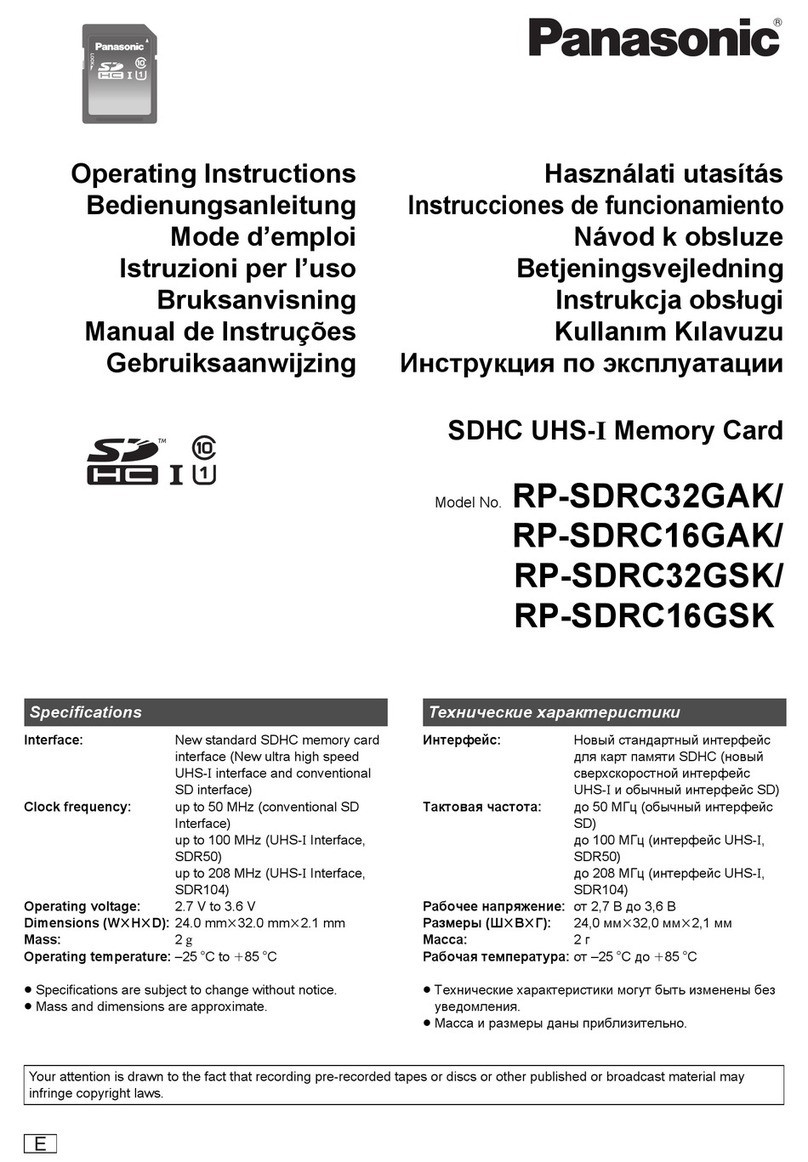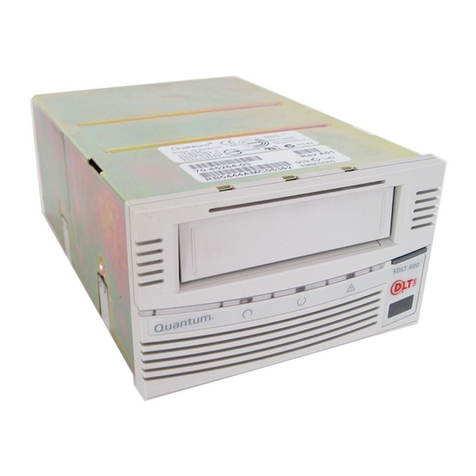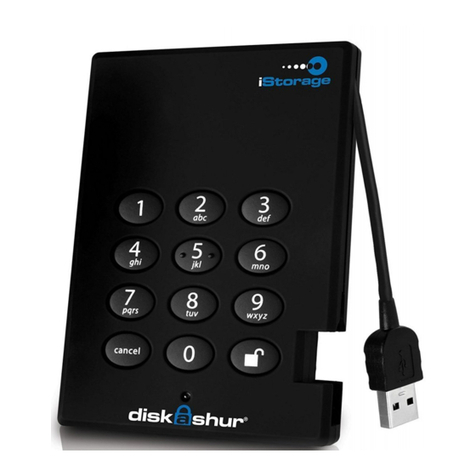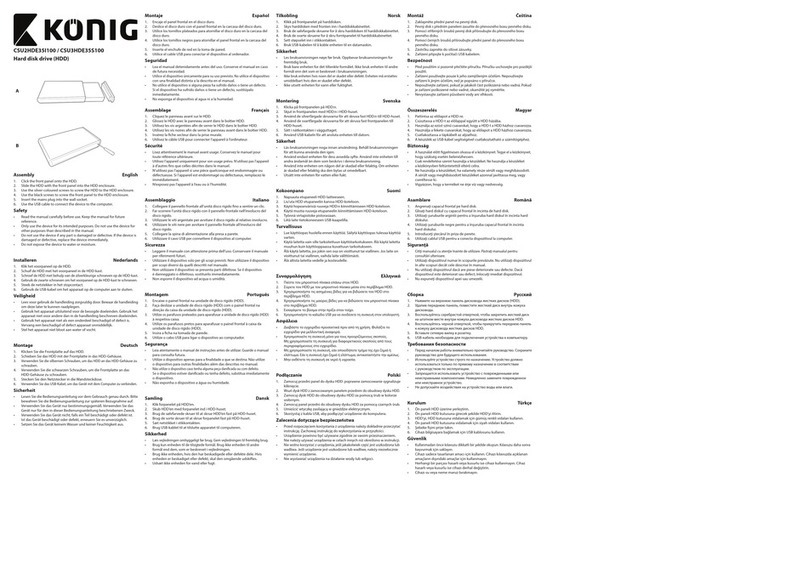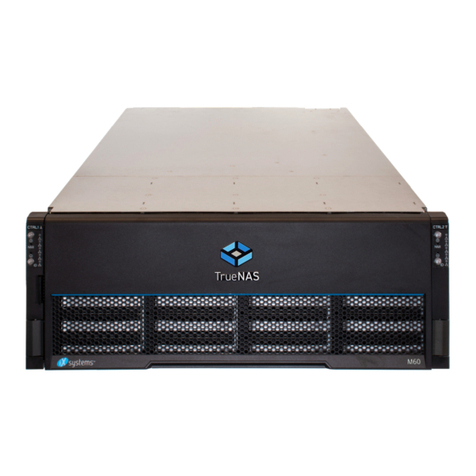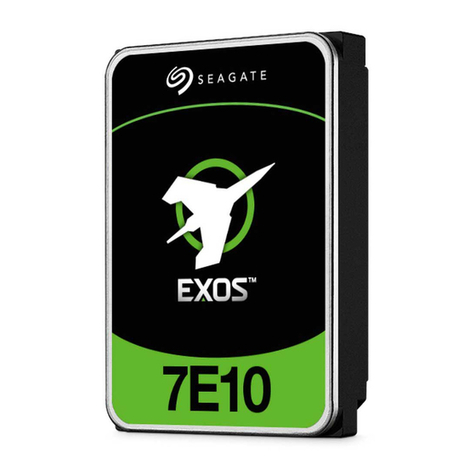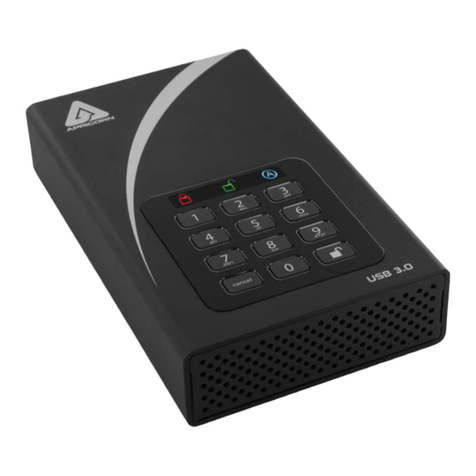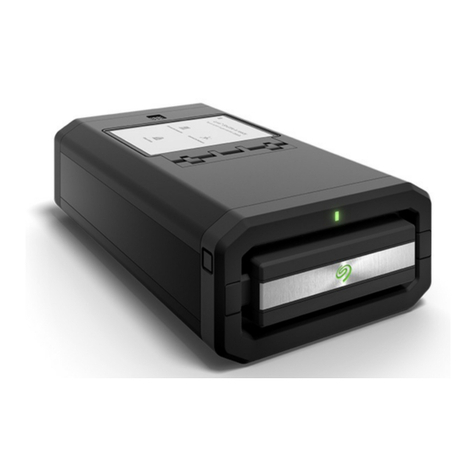ECKELMANN CI 3000 User manual

Version 2.09 09. April 2014
Operating instruction
Store Computer CI 3000 / CI 3100
Extension module SIOX
Version V5.12

Version 2.09 09. April 2014
Eckelmann Gruppe
Eckelmann AG
Business Unit Refrigeration and Building Management Systems
Berliner Straße 161
65205 Wiesbaden, Germany
Telephone +49 611 7103-0
Fax +49 611 7103-133
www.eckelmann.de
Board of Directors:
Dr.-Ing. Gerd Eckelmann, Vorsitzender, Dr.-Ing. Peter Cordes, Dr.-Ing. Frank-Thomas Mellert
Deputy Board Member:
Dipl.-Ing. Peter Frankenbach, Dr.-Ing. Marco Münchhof, Dr.-Ing. Frank Uhlemann
Chairman of the supervisory board:
Hubertus G. Krossa
Registration court / registration number
District court Wiesbaden, Germany
HRB 12636
Before commissioning and use, please check that this is the latest version of the document.
With the publication of a new version of the documentation, all previous versions lose their validity.
Errors and technical modifications are expressly reserved.
Information on safety and connection instructions
are described in detail in chapter 1 ”Industrial safety notes”.
All rights to any use whatever, utilisation, further development, forwarding and creation of copies remain with
the Eckelmann AG company.
In particular, neither the contract partners of Eckelmann AG nor other users have the right to distribute or mar
ket the IT programs/program parts or modified or edited versions without express written permission. To some
extent, names of products/goods or designations are protected for the respective manufacturer (registered
trademarks etc.); in any case, no guarantee is assumed for their free availability/permission to use them. The
information provided in the description is given independently of any existing patent protection or other third-
party rights.

i
Version 2.09 09. April 2014
Conventions 1.....................................................................
Explanation of 'General Instructions' 1.................................................
Explanation of 'Safety Instructions and Hazard Warnings' 1..............................
Warning Signs and Symbols Employed 2..............................................
1 Safety instructions 3.....................................................
1.1 Disclaimer in the event of non-compliance 4.................................
1.2 Personnel requirements, requirements on staff 4.............................
1.3 Intended use 5...........................................................
1.4 BGV A3 - Five safety rules 5...............................................
1.5 Electrostatic sensitive devices (ESDs) 6.....................................
1.5.1 ESD - Rules for handling and working 6.....................................
1.6 Abbreviations used 6......................................................
2 System Design of CI 3000 7..............................................
2.1 Circuit points 8...........................................................
2.2 New features compared to previous versions 9...............................
3 Application of CI 3000 13..................................................
4 Function of CI 3000 15....................................................
4.1 Alarms and messages 15...................................................
4.1.1 Acknowledgement of alarms and messages 16................................
4.1.2 Remote alarm messaging 17................................................
4.1.2.1 The priority concept 18.....................................................
4.1.2.2 Extended alarm destinations 18.............................................
4.1.3 Suppressing false alarms caused by maintenance work (service mode) 20........
4.2 Relay outputs 21..........................................................
4.2.1 PRIO1 / PRIO2 alarm relay 21..............................................
4.2.2 AUX Multifunctional relay 21................................................
4.3 Digital inputs 22...........................................................
4.3.1 Message and Alarm Inputs 22...............................................
4.3.2 Special Inputs 23..........................................................
4.4 CAN bus station monitoring 24..............................................
4.5 Alarm suppression in manual shutdown of LDS components 24.................
4.6 Configuration of the LDS system via the PC software LDSWin 25................
4.7 Automatic fault report transmission via modem 25.............................
4.8 Display of Temperature Archives (HACCP) on Store Computer 25...............

ii Version 2.09 09. April 2014
4.9 EU archive 26.............................................................
4.9.1 Archive memory requirements 26............................................
4.10 Timers 28.................................................................
4.11 Energy management 28....................................................
4.11.1 Totalizer and peak load monitoring 29........................................
4.11.2 Load Shedding Manager (LSM) 29...........................................
4.12 M-bus Interface for consumption data capture 31..............................
4.13 Integration of refrigeration controllers 32......................................
4.14 Integration of Third-party case controllers 32..................................
4.15 FAQs - Frequently asked questions and answers 32...........................
5 Installation and Startup of CI 3000 / SIOX 33................................
5.1 Panel mounting 33.........................................................
5.2 CAN bus 34...............................................................
5.2.1 Fast CAN bus connection 34................................................
5.3 Modem 35................................................................
5.3.1 SMS Text Message Transmission via a GSM Modem 36.......................
5.3.2 FAX transmission via ISDN modem 36.......................................
5.3.3 Modem hardware reset 36..................................................
5.4 Local configuration LDS-system by service PC 37.............................
5.5 SIOX Extension Modules - for DIN rail mounting 38............................
5.5.1 SIOX - Connecting to the store computer 39..................................
5.5.2 Configuring of SIOX 40.....................................................
5.5.3 SIOX - Connecting to energy, gas and water meters 41........................
5.5.3.1 Calculation of Consumption/Capacity from Meter Values 43.....................
5.5.4 24 V DC supply via SIOX terminals 93 and 94 44..............................
5.6 Special functions for startup 45..............................................
5.7 Connecting case controllers 46..............................................
5.8 Connection of the M Bus Gateway 47........................................
5.8.1 M-Bus-Gateway status LEDs 48.............................................
5.9 DIP Switch / Jumpers 49....................................................
5.10 Firmware update 50........................................................
5.10.1 Downloading software update 51............................................
5.11 Replacing the battery 53....................................................

iii
Version 2.09 09. April 2014
6 Pin and Terminal Assignments of CI 3000 / SIOX 57.........................
6.1 CI 3000 Store computer terminal diagram 57..................................
6.1.1 Terminal assignment for 230 V AC power supply 58............................
6.1.2 Terminal assignment for 230 V AC digital inputs 58............................
6.1.3 Terminal assignment for 230 V AC relay outputs 59............................
6.1.4 Terminal assignment for CAN bus 60.........................................
6.1.5 Terminal assignment for the interfaces 60....................................
6.2 SIOX - Extension module terminal diagram 61.................................
6.2.1 SIOX - Terminal assignment of digital inputs 24 V AC/DC / 230 V AC 62.........
6.2.2 SIOX - Terminal assignment for 230 V AC relay outputs 63.....................
6.2.3 SIOX - Terminal assignment of the interfaces 64...............................
7 Operation of CI 3000 65...................................................
7.1 Operating interface 65......................................................
7.2 Menus and screens 65.....................................................
7.2.1 Deactivate entry block 68...................................................
7.2.2 Superuser mode (granting Superuser rights) 69...............................
7.2.3 Service-Modus 69.........................................................
7.3 Remote operation/parameter setting of a LDS component 70...................
8 Menu structure of CI 3000 71..............................................
8.1 Main menu 71.............................................................
8.1.1 Menu Main menu 73.......................................................
8.1.2 Menu 1 Alarms 73.........................................................
8.1.3 Menu 2 General Overview 74...............................................
8.1.4 Menu 3 Archive 74.........................................................
8.1.5 Menu 4 Message Log (Event Log) 75........................................
8.1.6 Menu 5 Remote Control 76.................................................
8.1.7 Menu 6 Store Computer 76.................................................
8.1.8 Menu 7 Monitoring 100......................................................
8.1.9 Menu 8 I/O Monitor 105.....................................................
8.1.10 Menu 9 Parameters 107.....................................................
8.1.11 Menü 0 HVAC Overview 111.................................................

iv Version 2.09 09. April 2014
9 Decommissioning and disposal 113.........................................
9.1 Decommissioning / Demounting 113..........................................
9.2 Disposal 113...............................................................
10 Alarms and Messages of CI 3000 115.......................................
11 Specifications of CI 3000 / SIOX 121........................................
11.1 Electrical data 121..........................................................
11.2 Mechanical data 124........................................................
11.2.1 Dimensions of the CI 3000 124...............................................
11.2.2 Mounting frame for panel mounting 125.......................................
11.3 Mechanical data, SIOX Extension Module 126.................................
12 Order numbers and accessories of CI 3000 127..............................
12.1 Store Computer 127.........................................................
12.2 Accessories for Store Computer 127..........................................

1
Version 2.09 09. April 2014
Conventions
Explanation of 'General Instructions'
A general instruction is composed of two elements:
1. A pictogram of a hand at the side of the page as well as
2. The actual text:
For example:
Further information on the device's degree of protection is contained in the chapter ”Technical Data”.
Explanation of 'Safety Instructions and Hazard Warnings'
Safety instructions or hazard warnings are composed of four elements:
1. The pictogram (warning sign / symbol) at the edge of the page.
2. A short, concise description of the danger.
3. A description of the possible consequences.
4. A catalogue with prevention measures.
For example:
Warning - hazardous electrical voltage!
Danger of electric shock! BEFORE and AFTER connection it
must checked that the 230 V AC relay outputs are off load!
On the following pages the warning signs and symbols employed for
the safety instructions and hazard warnings in this documentation are described in more detail.

2Version 2.09 09. April 2014
Warning Signs and Symbols Employed
Explanation of the warning signs and symbols employed for the safety instructions and hazard warnings in this
documentation:
SAttention symbol - general hazard warning
1. Hazard warning
The attention symbol indicates all safety instructions in this operating instruction and service manual,
which, if not observed, could result in danger to life and limb. Carefully comply with the work safety in
structions and proceed with special caution in these cases.
2. Attention
The attention symbol highlights guidelines and regulations, instructions and correct working procedures
that must be carefully observed in order to prevent damage to or destruction of LDS components or a
malfunctioning (for example to avoid damage to goods).
Failure to observe the attention symbol can result in personal injury (in extreme cases serious injuries or
death) and/or material damage!
SVoltage symbol - warns of hazardous electrical voltage
This work safety symbol warns of danger from a hazardous electrical voltage,
with potential consequences such as serious injury or death.
SESD symbol - warns of electrostatic sensitive components and assemblies
This symbol indicates electrostatic sensitive components and assemblies,
for details see chapter 1.5.
SNote symbol
The note symbol highlights practice tips and other useful information contained in this
operating instruction and service manual.
SBattery disposal symbol
Never dispose of this product with other household waste. Please inform yourself of the local regula
tions for the separate disposal of electrical and electronic products. The correct disposal of your old
equipment will protect people and the environment from possible negative effects.
You will find further information in the chapter ”Decommissioning and Disposal”.

Safety instructions
3
Version 2.09 09. April 2014
1 Safety instructions
The safety regulations, codes and notes contained in this section must definitely be observed and
complied with at all times. During repairs on the entire LDS system, the accident prevention regula
tions and general safety instructions must be observed. Important information (safety instructions
and hazard warnings) are indicated by corresponding symbols (see page 1 of the chapter ”Conven
tions”).
Follow these instructions in order to prevent accidents and danger to life and limb, as well as dam
age to the LDS system.
Warning - hazardous electrical voltage!
Danger of electric shock! Beware of external voltage at the digital inputs and outputs!
All device connections/plugs are only to be plugged in, unplugged and/or wired when off load.
SThis operating instruction is an integral part of the equipment. It must be kept in the proximity of the equip
ment and must be stored for future use, so that it can be referred to when necessary. To avoid operating er
rors, the operation instructions must always be kept available for operating and maintenance staff, see Chap
ter 1.2.
SFor safety reasons, the equipment must not be used for any application other than described in the operating
instruction i.e. only for the intended use, see Chapter 1.3.
SBefore using the equipment, always check that its limits are suitable for the intended application.
SCheck that the electric power supply is correct for the equipment before connecting it to power.
SWhen using un-coded plug connectors it is possible to connect them so that there is a danger to life and limb!
If this cannot be excluded, coded plug connectors must be used.
SSpecified ambient conditions (e.g. humidity and temperature limits) must be observed and complied with in
order to avoid malfunctioning (see Section “Specifications”).
SCheck correct wiring of the connections before switching on power to the equipment.
SNever operate the equipment without its casing. Before opening the casing the equipment must be switched to
zero potential.
SNote and observe maximum load on relay contacts (see Section “Specifications”).
SContact the supplier in any malfunction.
1. According to experience, error message transmission is not yet fully functional during commis
sioning (no telephone line laid etc.) In such cases it is urgently recommended to monitor the con
troller via the CAN bus using a store computer or an operator terminal, and enable error message
transmission e.g. using a GSM modem via a mobile telephone network. In stand alone operation, or
as an alternative to monitoring with the store computer/ operator terminal, an alarm contact on the
controller must be used in order to realise error message transmission via a telephone network.
2. Following the setup of error message transmission, i.e. alarm signalling, it must be tested and in
spected to ensure correct functioning.
For further information on the CAN bus, see the operating instruction
”Basic and General Safety and Connection Instructions”.

Safety instructions
4Version 2.09 09. April 2014
Work on electrical equipment may only be undertaken by authorized and duly trained personnel
(as defined by DIN/VDE 0105 and IEC364) with full observance of the currently valid regulations
contained in the following:
- VDE Regulations
- Local safety codes
- Intended use see chapter 1.3
- BGV A3 - Five Safety Rules see chapter 1.4
- ESD precautions and rules see chapter 1.5.
- Operating instructions
1.1 Disclaimer in the event of non-compliance
These operating instructions contain information on the commissioning, function, operation and maintenance of
the controls and of the associated components.
Observance of these operating instructions is a prerequisite for safe and trouble-free operation.
1.2 Personnel requirements, requirements on staff
Special skills are required for project planning, programming, assembly, commissioning and maintenance work.
This work may be performed by qualified and specially trained staff.
The staff involved in installation, commissioning and maintenance must have received the special training
needed for them to work on the unit and on the automation system.
The project planning and programming staff must be familiar with the safety concepts involved in automation
technology.
Expertise is a requirement for any work on electrical systems. Work on electrical installations may only be per
formed by trained electrical specialists (or may only be performed when directed or supervised by them). The
applicable regulations (e.g. DIN EN 60204, EN 50178, BGV A2, and DIN VDE 0100/0113) must be followed.
The operating staff who deal with the unit/machine and the controls must be correspondingly trained and familiar
with the operating instructions.

Safety instructions
5
Version 2.09 09. April 2014
1.3 Intended use
This control system may only be used for the purpose for which it is intended:
The CI 3000 control system has been designed for use as store computer in commercial, industrial refrigeration
systems and building management systems with the intended functional scope as described in these operating
instructions, and it is to be used under the environmental conditions in these instructions.
Follow the safety instructions, as well as the instructions on installation, commissioning, operation and mainte
nance. Only THEN should you start commissioning or operating the machine/system.
The safety and function of the machine/unit is only assured in the use for which it has been intended.
Never use the machine/unit, its components, assemblies or parts of it for a different purpose.
The installation may be only operated for the first time when the entire unit has been shown to conform
to the EC Directives.
1.4 BGV A3 - Five safety rules
The following rules must be strictly observed:
1. Disconnect electric power: Disconnect power at all connections of the entire installation on which
work is to be carried out.
Warning - hazardous electrical voltage!
Beware of possible external power supplies! BEFORE and AFTER connection it must be checked
that the controller is off load! All device connections/plugs are only to be plugged in, unplugged and/
or wired when off load.
2. Secure against reconnection of power: Tag the disconnected equipment with the following information:
‐ What has been disconnected from power
‐ Why it has been disconnected
‐ Name of person who disconnected power
‐ Use a suitable lock-out (e.g. padlock) to prevent reconnection of power.
3. Make sure that power is off (authorized and duly trained personnel only):
‐ Check with voltmeter immediately before use.
‐ Check that power is off on all connections at the disconnection point.
‐ Check that power is off on all connections at the place of work.
4. Ground and short circuit: Ground and then short circuit all electrical parts at the place of work.
5. Cover or bar off adjacent power-carrying parts: Any equipment carrying power adjacent to the work area
must be covered by suitable means (e.g. insulating cloths or panels).

Safety instructions
6Version 2.09 09. April 2014
1.5 Electrostatic sensitive devices (ESDs)
Electronic components and assemblies (e.g. printed circuit boards) are vulnerable to electrostatic
discharge. Regulations for handling and working with electrostatic sensitive devices must definitely
be observed and complied with, see also section 1.5.1!
All electrostatic sensitive devices (ESDs) are identified by the warning sign illustrated. Electrostatic discharge is
caused by friction of insulating materials (e.g. floor coverings, synthetic fiber clothing, etc.).
Even slight charges can cause components to be damaged or destroyed. Damage cannot always be ascer
tained directly and it may take time for the component to actually fail in operation.
1.5.1 ESD - Rules for handling and working
Transport and store ESDs only in the protective packaging provided.
Avoid materials that may produce electrostatic discharge, for example
‐ Plastic containers and table tops
‐ Synthetic fiber clothing
‐ Plastic-soled shoes
‐ Plastic file covers
‐ Styrofoam packaging
‐ Computer monitors, etc.
Preferably wear the following:
‐ Cotton work clothes
‐ ESD shoes with conductive soles or leather soles
Use the following:
‐ Conductive flooring
‐ ESD workstations equipped with suitable tools (grounded soldering guns, antistatic wrist straps, etc.)
‐ Conductive ESD bags, conductive plastic containers, IC tubes or cartons lined with conductive foam
‐ Containers and worktops made of wood, metal or conductive plastics or paper bags
1.6 Abbreviations used
DIN Deutsches Institut für Normung e. V.
EGB Elektrostatisch Gefährdete Bauelemente oder Baugruppen
ESD Electro-static discharge (Electro Sensitive Devices)
VDE Verband der Elektrotechnik Elektronik Informationstechnik e.V.
IEC International Electric Committee
BGV A3 Employer’s Liability Association regulations for health and safety in the workplace

System Design of CI 3000
7
Version 2.09 09. April 2014
2 System Design of CI 3000
All the details of the ”CI 3000 Store Computer” described in this document always refer to the
”CI 3100 Store Computer” as well. Any differences in function or features between these two control
components are only explained where they have an effect.
The main features distinguishing the two variants:
The CI 3100 has a third interface (COM3), see Section 2.1.
The CI 3000 Store Computer is the central unit of the LDS System.It can be operated via the integrated key
board, the operator terminal of the AL 300 and/or remotely via a host system, i.e. on-site service PC with
LDSWin software.
A maximum of 4 SIOX Extension Modules (serial input-output extension) can be connected to provide an addi
tional 32 digital outputs and 48 digital inputs.
Depending on the expansion level, the CI 3000 Store Computer has 2 MB, 6 MB or 16 MB of memory.
(The CI 3100 is only available with 6 and 16 MB memory expansions)
It is designed to install in a control panel.
The CI 3000 store computer is not equipped with a direct interface to the LDS1 system (VS 1000 /
VS 2000 and CI 320 / CI 322)! For the integration of LDS1 case controllers LDS1 gateways are re
quired. For more details see the ”LDS1 Gateway” operating instruction.
Data interface to
external central
building control
system (BCS)
Wählnetz
oder
Telephone
network
Web-Server
Remote PC /
Host system
Wählnetz
oder
Internet
Internet
2 x digital inputs for
external alarms or meters
230 V AC
3 x digital outputs
two-way contacts,
floating,
e.g. alarm device
1 x switch for
possible external circuit
MODEESC
PRIO 1
PRIO 2
,
9
WXYZ
7
PQRS 8
TUV
6
MNO
4
GHI 5
JKL
3
DEF
2
ABC
1
0
ALARM
RESET
CI 3000
LDSWin
COM1
Modem/
Serial
MODEM
or
LDS Components
via CAN bus
ZNR. 51203 67 130 E3
2 x digital inputs
230 V AC or 24 V AC or
24 V DC S0 (meters)
SIOX
IN
SIOX
IN
SIOX Supply
1st Extension
Module SIOX
4th .Extension
Module SIOX
SIOX
OUT
Up to 4
Extension
Modules
SIOX
2 x digital inputs
230 V AC or 24 V AC or
24 V DC S0 (meters)
24 V DC
power supply for S0
24 V DC
power supply for S0
Digital outputs
4 x two-way contacts
4 x normal open contacts
Digital outputs
4 x two-way contacts
4 x normal open contacts
Service-PC
LDSWin
COM3
()CI 3100 only
RS485
UA 30
LDS1-Gateways
COM2
RS232
Modbus
UA 30
M-Bus
LDS1-Gateways
RS485/

System Design of CI 3000
8Version 2.09 09. April 2014
2.1 Circuit points
The CI 3000 Store Computer has the following connections (see also section 5 for further details of - Pin and
Terminal Assignment):
Interfaces CI 3000
SCAN bus port to interconnect all LDS components (e.g. case/coldroom controllers of UA 300 / UA 400 Series,
pack controllers of type VS 3010 / VS 3010 BS, FS 3010 or VS 300)
SModem port for remote access by host computer via modem or for connection of service computer
SRS232 interface (COM2) for special functions (e.g. connection of compact controllers UA 30 Rx / Dixell,
external controllers or BMS data interface to external systems or M-bus)
STwo connectors (control, power supply) for maximum four 4 optional SIOX Extension Modules
SCI 3100 only: RS485 interface (COM3) for direct connection to compact controllers UA 30 Rx / Dixell, so that
the RS232-interface (COM2) can be used for external controllers or as a BMS data interface to external sys
tems or for the M-bus:

System Design of CI 3000
9
Version 2.09 09. April 2014
Inputs and outputs
S2 x inputs 230 V AC (for external alarm and meter reading)
S3 x outputs 230 V AC floating
2 x alarm contacts, e.g. for telephone dialer
1 x audible signalling unit
SCan be extended with a max. of 4 SIOX extension modules
each SIOX provides
- an additional 12 digital inputs (for meter, alarm etc.) and
- an additional 8 digital inputs (for time switch, load shedding)
S1 switch (floating 230 V AC) with external wiring option
2.2 New features compared to previous versions
Version 5.12:
‐ Various corrections
‐ Support for further M bus meters
Version 5.0:
‐ Extended alarm and message priorities 3..99
‐ Sending of alarms and messages (incl. to multiple SMS destinations)
‐ Sending of alarms and messages via FAX using an ISDN modem
‐ AUX relay can be used as an alarm relay
‐ Daily test alarm for inspecting the alarm route
‐ Fast CAN bus connection between CI 3000 and Combi Gateway
Danger of a loss of the configuration!
Due to more fundamental changes to the store computer, during an update from version < 5.0 to
version 5.0 and higher it is necessary to re-enter all settings for the error message transmission.
See menu 6-1-4 and all sub-menus.
Version 4.26:
‐ Terminal mode for BMS possible (only CI 3000)
Version 4.24:
‐ Calling up temperature archives (HACCP) on the store computer (see menu 6-3)
‐ M-bus interface for consumption data capture (meter injection) realised
‐ Integration of LDS1 gateways
‐ New special inputs
‐ Text messages from radio sensors now include their sensor ID
‐ Alteration of the factory settings for the system alarms' alarm priorities (see menu 7-4)
‐ Password protection by restricted setpoint changes to interlock the entry
Version 4.19:
‐ SMS text message transmission via a GSM modem

System Design of CI 3000
10 Version 2.09 09. April 2014
‐ EU archiving with Data Logging Controller UA 300 L as per EU regulation
(the UA 300 L records the temperatures in place of the refrigeration controller).
‐ 24-h actual values and energy archives can be reloaded (e.g. following a firmware update)
‐ Integration of the WR 300 receiver modules for TS 30 W wireless sensors
Until now New
As a result of technical developments, there are now two hardware versions of the store computer
beginning with version 4.08! Please note that the plug-in jumpers on the rear of the previous model
have been replaced with DIP switches situated on the top left hand side of the housing (viewed from
behind) on the new model (see picture).
Version 4.10:
‐ The store computer's two 230 V AC digital inputs can be configured for the purpose of meter reading
‐ Connection to external systems
‐ Integration of Danfoss SLV controllers
‐ Archiving of the actual values of
- UA 30 Rx / Dixell compact controllers
- AHT cases with worm controllers
- AHT cases with Danfoss SLV controllers

System Design of CI 3000
11
Version 2.09 09. April 2014
Version 4.03:
‐ ISDN Modem
‐ Integration of Compact Case Controllers (e.g. UA 30 Rx / Dixell)
‐ Load shed manager
‐ Service mode implemented, enabling service technician to suppress remote alarm signalling for the dura-
tion of maintenance work (limited time duration 1 to 255 min.)
‐ Alarm takeover (by service center)
‐ Store computer check initiated by CI 3000
‐ Access control by Store ID
‐ Enabling of setpoint adjustment for specific LDSWin dongles
‐ Fault report forwarding by voice mail to telephone with acknowledgment
‐ Additional special inputs:
- Store closed (shunt lock)
- Emergency power supply
- Sprinkler alarm
‐ Limit monitoring for meters (electricity, water, gas)
‐ Totalization of meters
‐ Changed last-in alarming of alarm relays:
- New alarms occurring during the delay are reported on expiration of delay
‐ Overview archive matched to UA 300 E and UA 300 V
Version 3.05:
- Connection to external systems:
- Inclusion of AHT controllers for plug-in display cases
- BMS modbus (e.g. PRIVA connection) extended with meter values
- Inclusion of ELC55 (DDC - digital direct control) for building control systems

System Design of CI 3000
12 Version 2.09 09. April 2014
Compatibility with other LDS components
Satisfactory operation of the CI 3000 Store Computer in the LDS System requires the LDS components to be
upgraded to the following software versions:
SLDSWin
- Full functionality: Version 2.2.3.680 or higher
- Configuration of transmission of alarms not supported
- Version 2.1 < Earlier than Issue 6: No remote access via modem. Direct connection (via null modem
cable or CAN bus dongle) available but not recommended
SOperator Terminal AL 300
When a CI 3000 Store Computer is connected to the LDS System, the AL 300 Operator Terminals used must
also be the same Version:
CI 3000 V5.0 ⇒AL 300 V5.0 (Update only necessary when priorities 3..99 are used)
CI 3000 V4.26 ⇒AL 300 V4.10
CI 3000 V4.24 ⇒AL 300 V4.10
CI 3000 V4.x ⇒AL 300 V4.x
CI 3000 V3.x ⇒AL 300 V3.x
CI 3000 V2.x ⇒AL 300 V1.x / V2.x
CI 3000 V1.x ⇒AL 300 V1.x
SUA 300/UA 400 Series
Case/coldroom controllers, all versions compatible
SUA 30 Rx Series
Compact Case/coldroom controllers, all versions compatible
SVS 3010 Series pack controllers
All versions compatible
SWR 300 / WR 400 receiver module
All versions compatible

Application of CI 3000
13
Version 2.09 09. April 2014
3 Application of CI 3000
SCentralized parameter setting and configuration of all LDS components via CAN bus:
The CI 3000 Store Computer can be used for remote control and configuring of all LDS components from a sin
gle location via CAN bus. In-use change of the user language can also be made from the central location.
SThe CI 3000 Store Computer's RS232 interface (COM2) with the RS232/RS485 Converter can be used to in
tegrate UA 30 Rx compact controllers / Dixell controllers as well as external controllers into the LDS system.
SCI 3100 only: UA 30 Rx compact controllers and Dixell controllers can be directly integrated in the LDS system
via the RS485 interface (COM3). The RS232 interface (COM2) is then available for the integration of external
controllers or as a BMS data interface to external systems.
SCentralized display of operating data, messages and alarms generated by all LDS components.
SAlarm signalling by indicator light and buzzer and by external horn and alarm contacts.
SMonitoring of two connected external digital signals (external alarms and meter)
SMonitoring of CAN bus and operational status of all LDS components:
Alarm is generated in fault or failure of CAN bus and failure of LDS components.
SCentralized time synchronization (master clock):
Date and time can be set with the CI 3000 Store Computer for the complete system. The CI 3000 Store Com
puter also performs cyclic synchronization of internal clocks in all LDS components via the CAN bus. The
CI 3000 contains a battery-backed real-time clock, which supports automatic daylight saving change.
SRemote maintenance of the installation / store via a central computer (PC) with the PC software LDSWin.
SEnergy management:
Power, water, gas meters and heat meters with a pulse output (S0) can be connected to the CI 3000
Store Computer i.e. also the M-bus meter by means of the M-bus gateway, which then determines and
archives current power or flow rate and the daily energy requirement or consumption.
SLoad Shedding Manager (LSM)
Load Shedding Manager can be configured for up to 20 shedding points and optimizes power input of the re
frigeration/building control system within a load optimizing interval of 15 min.
SRemote alarming of LDS System Alarm signal transmitted to fault indicator centre
via modem, GSM, SMS, FAX, voice message and network.

Application of CI 3000
14 Version 2.09 09. April 2014
Notice:
This manual suits for next models
1
Table of contents
